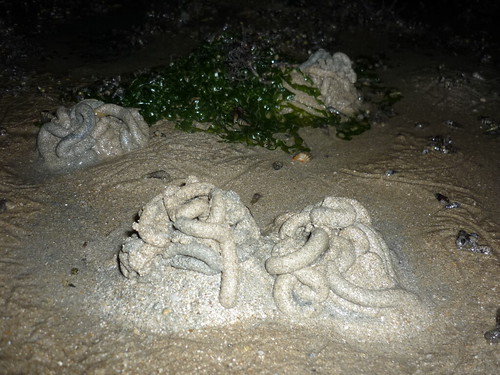
Update: Check out Ria's posts: Pack of Wild Squid and Another fishy day at Tanah Merah.
It was my first time visiting this stretch of shore at Tanah Merah, and it certainly was a very interesting trip.
A massive seawall runs along the entire length of this stretch of coast. Behind this wall, and shielded from the direct impact of the waves, is a vast expanse of sand.

It was impossible not to notice the massive numbers of zoned horn snails (Batillaria zonalis) on the damp sand.
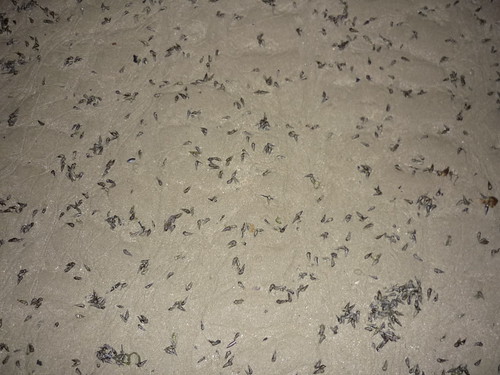
They were literally everywhere!
I've seen large groups of these snails on many other shores, but I have never seen any other shore that was literally carpeted with zoned horn snails like this one.

Closer to the seawall, where there's more moisture, the zoned horn snails are even more abundant.
For a moment, I contemplated taking a closer look and see if I could find other similar species of creeper snails scattered amongst the zoned horn snails, such as the girdled horn snail (Cerithidea cingulata) and plain creeper snail (?Cerithium coralium). However, I quickly gave up; it's difficult to adequately describe just how the zoned horn snails so overwhelmingly dominate the shores.
I did take a closer look, and I managed to find a couple of other snail species that lived on the damp sand.

Such as the prickly whelk (Nassarius crenoliratus).
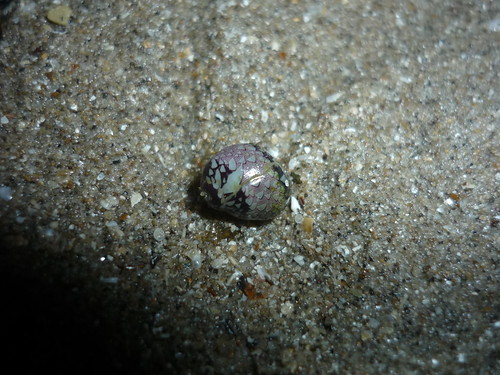
And the dubious nerite (Clithon oualaniensis), a species considered to be Vulnerable due to reclamation of suitable coastal habitats.
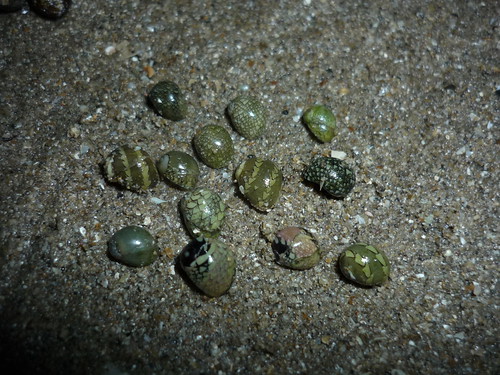
Each of these tiny snails appears to have its own unique array of colours and patterns on its shell.

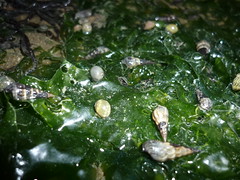
Later on, I found quite a number of dubious nerites on a tangled clump of seaweed.

There was also this chameleon nerite (Nerita chameleon) crawling on the sand close to the rocks that had accumulated behind the seawall. You can see how tiny the dubious nerite is in comparison.
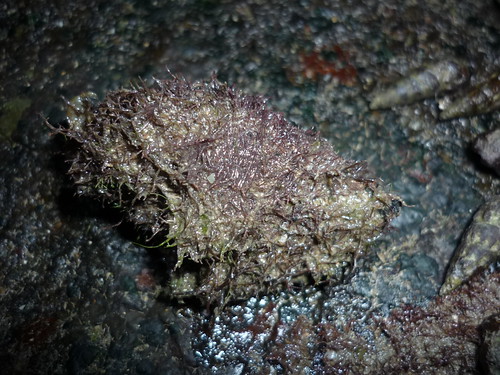
This misshapen lump on a rock moved a little, revealing the presence of a firebrand murex (Chicoreus torrefactus).
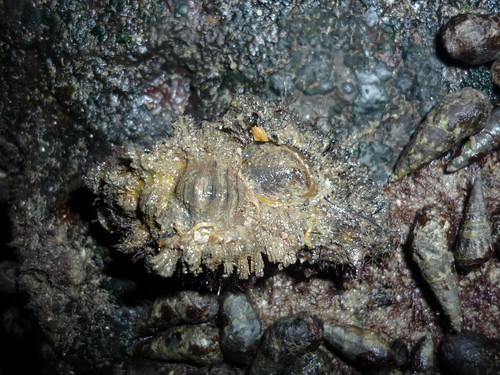
This is a close relative of the mangrove drill (Chicoreus capucinus) seen in mangroves.
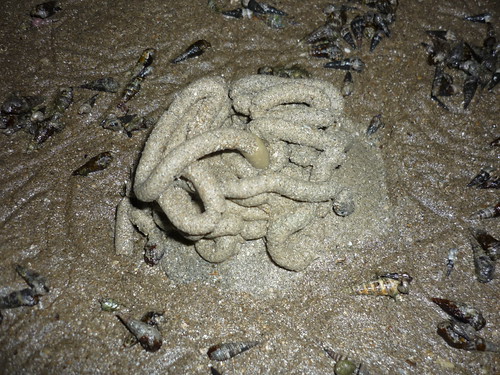
Another very common inhabitant on this shore is the acorn worm (C. Enteropneusta).
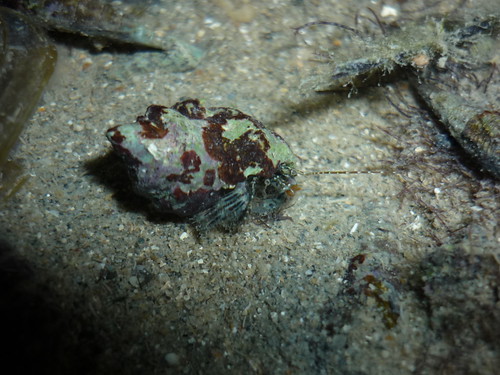
Just like on most other shores, there were plenty of hermit crabs. I don't normally pay a lot of attention to them, and tend to assume that they are mostly tidal hermit crabs (Diogenes sp.). However, a couple that I picked up and took a closer look at turned out to be banded hermit crabs. This is the first time I've ever encountered this species on my exploration trips, although it seems to be widespread and found on many of our shores.

The pools that had formed as the tide went out were full of other crustaceans, such as snapping shrimp (F. Alpheidae).
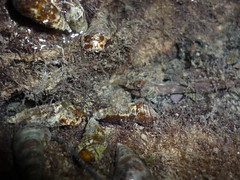
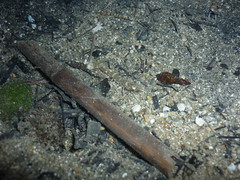
Let's play a game. There's a shrimp in the photo on the left, and a prawn in the photo on the right. Can you find them?
The red-nose shrimp (Periclemenes sp.) and plain prawn (F. Penaeidae) were extremely numerous, being found in almost every pool of water along the shore. Both species are nearly transparent, and can be difficult for the novice to spot. However, one soon learns to look out for the telltale eyeshine, as their eyes reflect the light from torches.
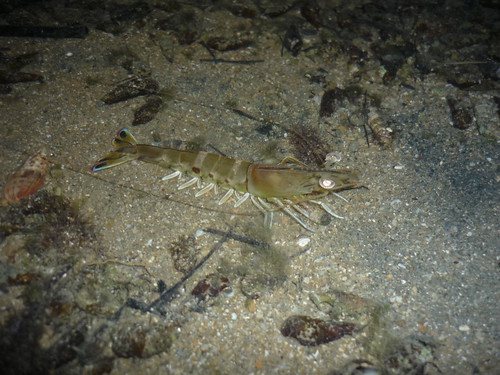
Here's another prawn I found, a much larger blue-tailed prawn (F. Penaeidae). I have a feeling that many of the so-called plain prawns are actually juvenile blue-tailed prawns.
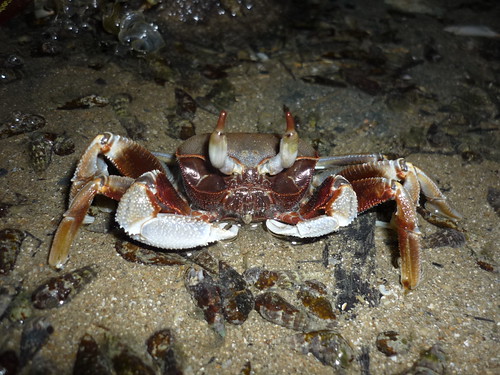
I was so engrossed with looking for creatures trapped in the pools that I didn't notice this horn-eyed ghost crab (Ocypode ceratophthalmus) until it suddenly dashed across my path.
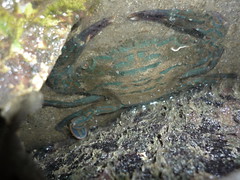
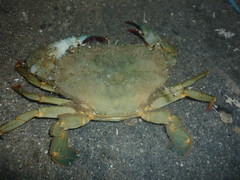
This shore proved to be very good for swimming crabs of all sorts (F. Portunidae). As I explored the rocks, I stumbled upon quite a number of blue swimming crabs (Thalamita danae) and blue-spined swimming crabs (Thalamita prymna), ranging in size from small youngsters to large adults.
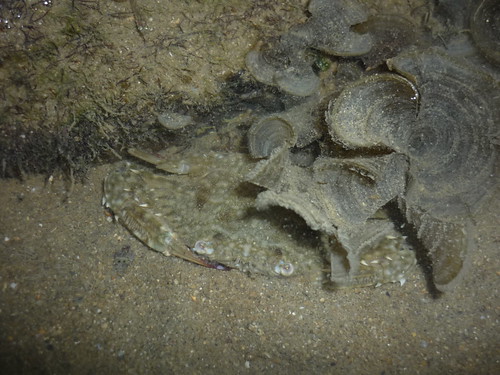
There were also many flower crabs (Portunus pelagicus).
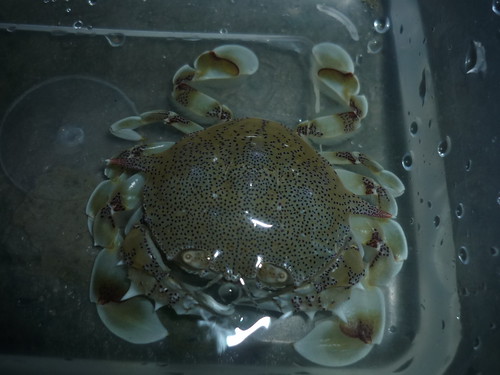
And later on, I found this spotted moon crab (Ashtoret lunaris).
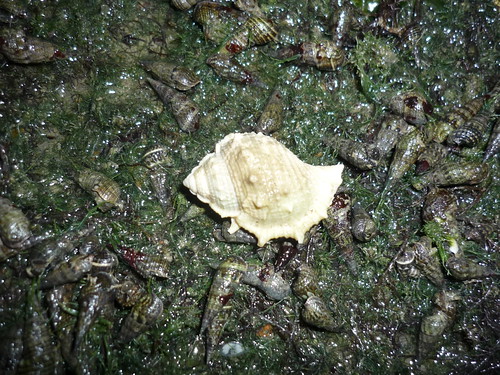
I found a very shy orange striped-legged hermit crab (Clibanarius infraspinatus) in this empty shell of a frog snail (Bufonaria sp.). According to the factsheet, the live snails are only very rarely encountered. However, the empty shells used by hermit crabs can serve as possible evidence for the presence of these snails in areas where live individuals have not been recorded.
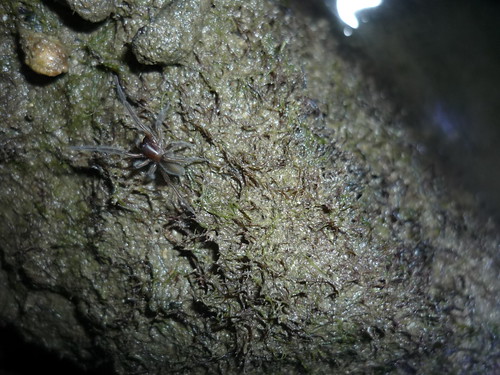
While I was waiting patiently for a swimming crab to emerge from its hiding place, I found this reef spider (Desis martensi) crawling around on the rocks nearby.
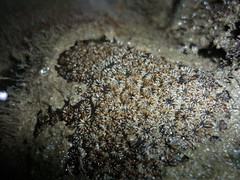
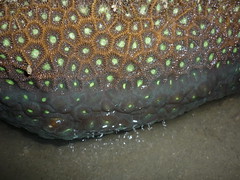
Hard corals could be found growing in some places. The 2 forms I saw today were the zebra coral ( Oulastrea crispata) and another favid coral with small hexagonal corallites (F. Faviidae). These are just 2 out of a stunning array of corals that can be found growing in the Tanah Merah; Kok Sheng and Mei Ling went to explore a nearby area previously, and discovered what Kok Sheng thinks might be the best mainland reef in Singapore.
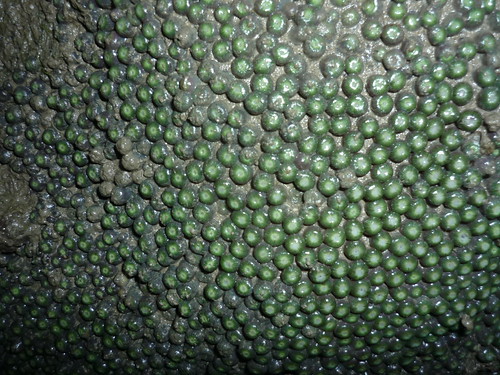
I also came upon this colony of button zoanthids (Zoanthus sp.). Strangely enough, I didn't see any sea anemones at all.
The most thrilling finds for me today were a couple of large bigfin reef squid (Sepioteuthis lessoniana), the largest squid I've ever encountered while out on the shores.
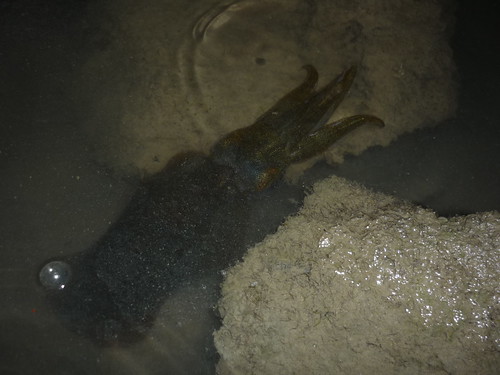
I was trying to maneuver myself into a better position to take a photo of a large swimming crab that was hiding beneath a rock. That was when I stumbled upon this large squid, about the size of my hand, lurking among the rocks in a nearby pool.
Later on, after I'd met up with Ria, she told me how she had been followed by packs of squid large and small. Not long after, I found a really huge squid.

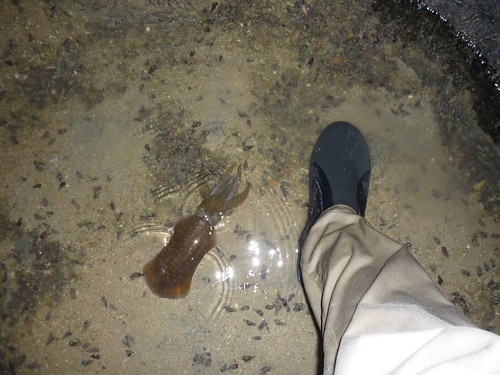
It was nearly as long as my foot!
I didn't get to see the shoals of squid that had been following Ria though.
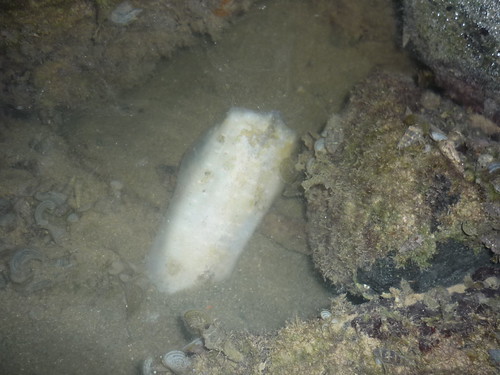
I did however find this headless body of a squid. Oh dear. Did it get its head bitten off by a predator? Or is this bait discarded by an angler?
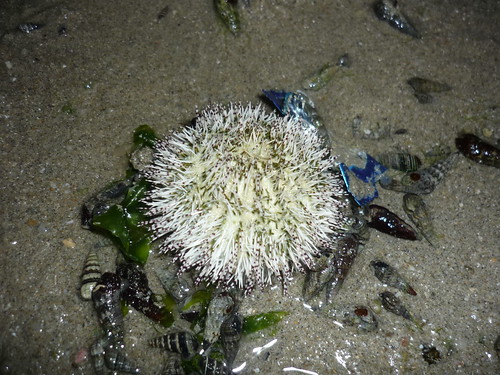
The only echinoderm I managed to find was this solitary white sea urchin (Salmacis sp.). Ria said she'd managed to find the group of common sea stars (Archaster typicus) that she'd encountered on a previous trip though.
Overall, I find that this shore at Tanah Merah is very similar to the islets off Siloso Beach, in terms of the substrate and the organisms present. Both are also artificial shores, having been formed due to land reclamation. Yet they clearly illustrate how marine life can easily settle and colonise new areas, provided that living conditions are suitable and we allow nature to take its course.
This stretch of coast is seriously vast, and I only managed to explore a small fraction of the shore. Although it is a little inaccessible, I'm really keen to spend more time surveying this shore, and seeing what else lives here, waiting to be discovered and documented.
This is part 1 of a 2-part series on a trip to Tanah Merah on 6th June, 2009.
Part 1: Exploring Tanah Merah (this post)
Part 2: Fishy Tanah Merah